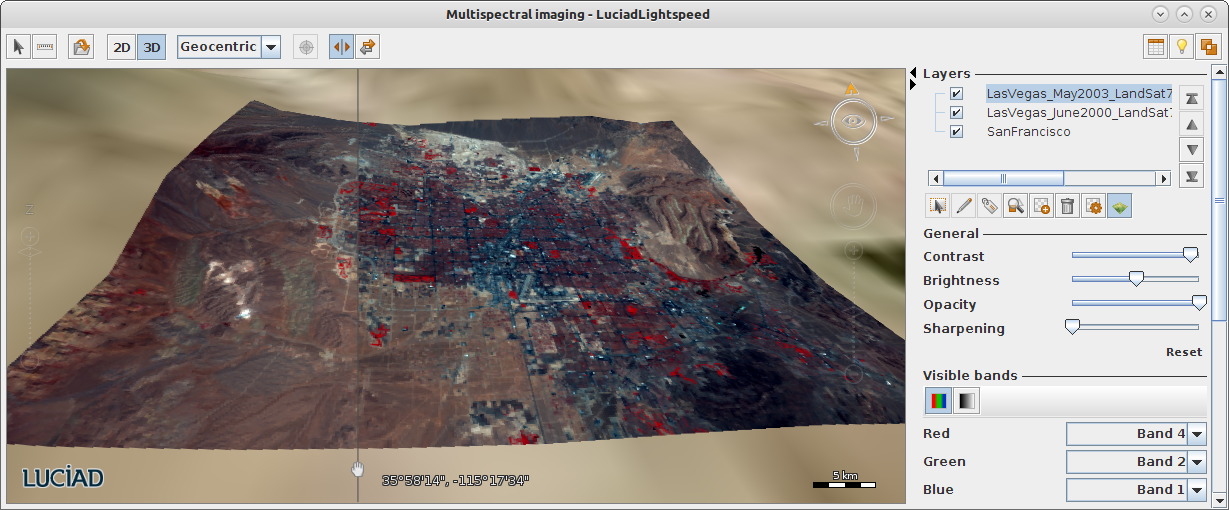LuciadLightspeed offers the following controllers to visually compare layers:
-
TLspSwipeControllercompares two sets of layers as shown in Figure 1, “Using the swipe controller to compare two satellite images in thelightspeed.imaging.multispectralsample”. The swipe controller splits the view with a vertical or horizontal swipe line. The first set of layers is shown on one side of the swipe line, the second set of layers on the other side. To reveal a larger portion of one of the two layer sets, drag the swipe line away from that layer set. When the controller is initialized, a vertical swipe line divides the screen in two equal halves. You can change the position and orientation of the line interactively by dragging it vertically or horizontally.

lightspeed.imaging.multispectral sample
-
TLspFlickerControllercompares two or more sets of layers by toggling layer visibility. When the controller is activated, the first set of layers is visible, while all other sets are made invisible. By clicking the mouse, you reveal the next set of layers and hide the others. The visibility toggling is optimized for speed to allow visual assessment of differences between layers.Flickering is supported for more than two sets of layers.
-
TLspPortholeControllercompares two sets of layers by cutting a hole in one layer set to expose a part of the other layer set. When the controller is activated, you will see that the first set of selected layers covers the view, but that it also has a hole that exposes the second selection of layers in a small square region around your mouse position. By moving the mouse, you move the hole around. By pressing the Shift key and scrolling the mouse wheel, you change the size of the porthole.If you just want to peel off layers in the hole around your mouse position, select only those layers that you want to cut through in the first set of layers. You can leave the second set of layers empty. As a result, the first set of layers will be peeled off in the porthole but is still visible around the porthole. All other layers are still visible in the porthole.
All controllers require you to specify which layers must be compared. To do so, call the setLayers method.
You can also use these controllers programmatically, or implement your own controller that works with key strokes or touch
events, for example.
The Lightspeed decoder samples and the lightspeed.imaging.multispectral sample demonstrate all visual inspection controllers.